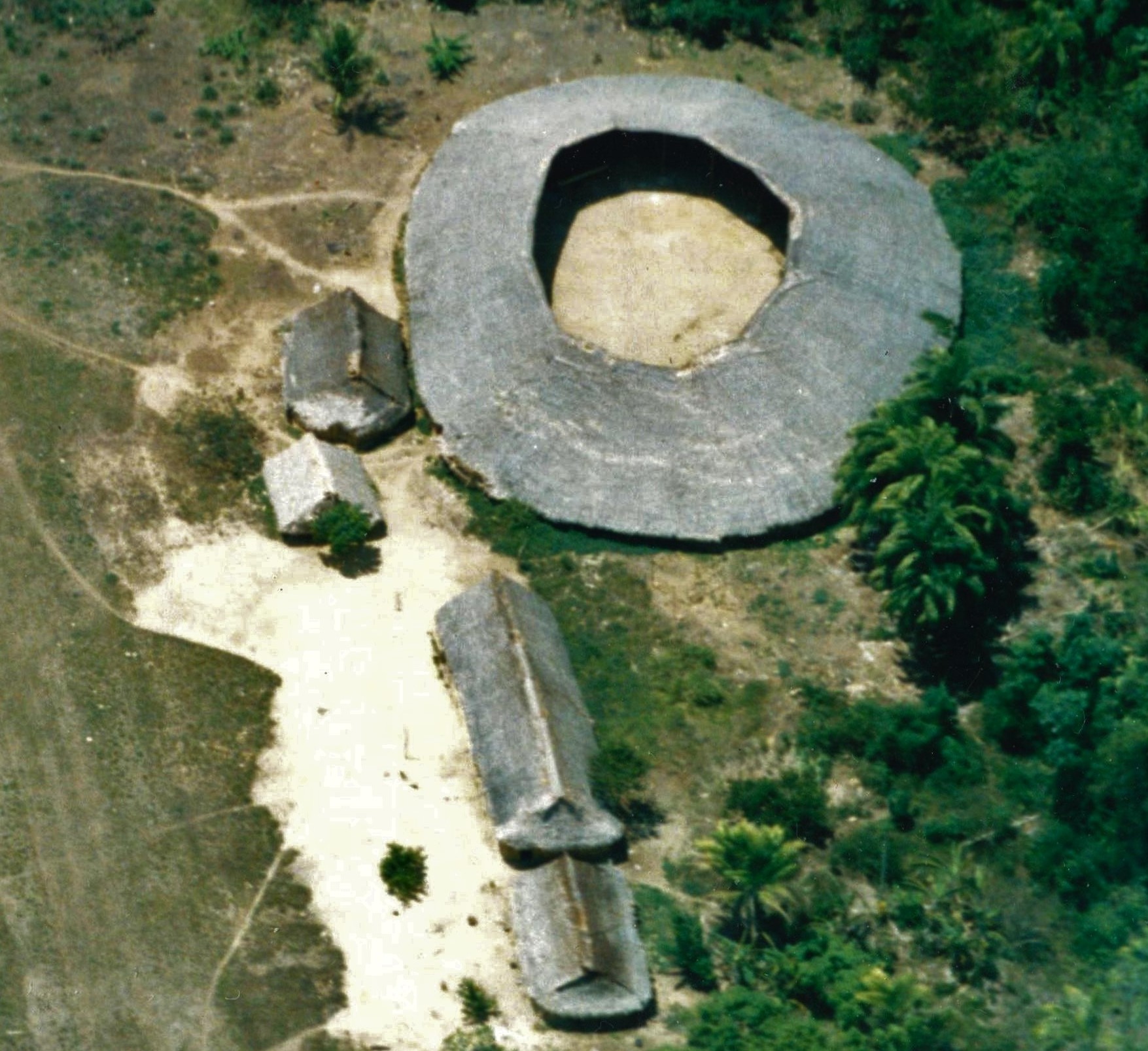Yanomami Shabono
Jump to navigation
Jump to search
Yanomami Shabono is a communal dwelling used by the Yanomamis.
- Context:
- It can (often) be a Yanomami Home (home).
- It can (often) be circular, providing a central open area for communal activities and individual living spaces around the perimeter.
- It can be constructed using traditional methods with materials such as thatched palm leaves and wooden poles.
- It can serve as the primary living space for extended families, accommodating multiple households under one roof.
- It can be integral to the Yanomami way of life, facilitating social cohesion, cultural practices, and communal living.
- It can be designed to be sustainable and in harmony with the surrounding rainforest environment.
- ...
- Example(s):
 .
.- ...
- Counter-Example(s):
- See: Indigenous Architecture, Amazon Rainforest Tribes, Communal Living, Traditional Building Technique, Sustainable Dwellings, Palisade, Hut, Yanomami, Indigenous Peoples of The Americas, Venezuela, Brazil, Survival International, Thatching.
References
2024
- (Wikipedia, 2024) ⇒ https://en.wikipedia.org/wiki/Shabono Retrieved:2024-6-11.
- A shabono (also xapono, shapono, or yano) is a hut used by the Yanomami, an indigenous people in extreme southern Venezuela and extreme northern Brazil.
Used as temporary homes, traditionally constructed mainly of thatched palm leaves and wood, shabonos are built in clearings in the jungle, using the wood cleared to build a palisade with a thatched roof that has a hole in the middle.
In traditional villages, multiple shabonos, each conical or rectangular in shape, surround a central open space. Each family unit has its own area within a given shabono separated by a wooden post. These would be a home for around 50 people.
- A shabono (also xapono, shapono, or yano) is a hut used by the Yanomami, an indigenous people in extreme southern Venezuela and extreme northern Brazil.